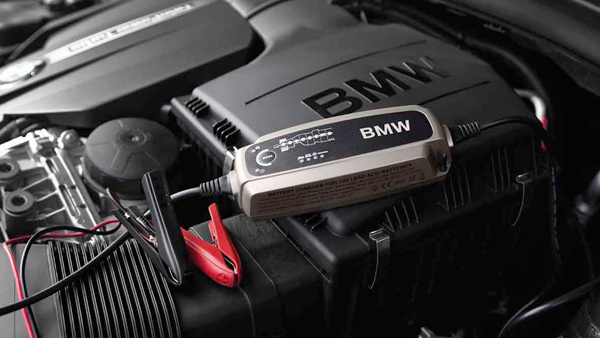
Let me give you the big picture first for those who aren’t very detail oriented. Basically, when a battery is being discharged, the sulfuric acid in the electrolyte is being depleted so that the electrolyte more closely resembles water. At the same time, sulfate from the acid is coating the plates and reducing the surface area over which the chemical reaction can take place. Charging reverses the process, driving the sulfate back into the acid. That’s it in a nutshell, but read on for a better understanding. If you’ve already run from the room screaming and pulling your hair, don’t worry. Maybe next month’s topic will be more to your liking.
The electrolyte (sulfuric acid and water) contains charged ions of sulfate and hydrogen. The sulfate ions are negatively charged, and the hydrogen ions have a positive charge. Here’s what happens when you turn on a load (headlight, starter, etc). The sulfate ions move to the negative plates and give up their negative charge. The remaining sulfate combines with the active material on the plates to form lead sulfate. This reduces the strength of the electrolyte, and the sulfate on the plates acts as an electrical insulator. The excess electrons flow out the negative side of the battery, through the electrical device, and back to the positive side of the battery. At the positive battery terminal, the electrons rush back in and are accepted by the positive plates. The oxygen in the active material (lead dioxide) reacts with the hydrogen ions to form water, and the lead reacts with the sulfuric acid to form lead sulfate.
The ions moving around in the electrolyte are what create the current flow, but as the cell becomes discharged, the number of ions in the electrolyte decreases and the area of active material available to accept them also decreases because it’s becoming coated with sulfate. Remember, the chemical reaction takes place in the pores on the active material that’s bonded to the plates.
Many of you may have noticed that a battery used to crank a bike that just won’t start will quickly reach the point that it won’t even turn the engine over. However, if that battery is left to rest for a while, it seems to come back to life. On the other hand, if you leave the switch in the “park” position overnight (only a couple of small lamps are lit), the battery will be totally useless in the morning, and no amount of rest will cause it to recover. Why is this? Since the current is produced by the chemical reaction at the surface of the plates, a heavy current flow will quickly reduce the electrolyte on the surface of the plates to water. The voltage and current will be reduced to a level insufficient to operate the starter. It takes time for more acid to diffuse through the electrolyte and get to the plates’ surface. A short rest period accomplishes this. The acid isn’t depleted as quickly when the current flow is small (like to power a tail light bulb), and the diffusion rate is sufficient to maintain the voltage and current. That’s good, but when the voltage does eventually drop off, there’s no more acid hiding in the outer reaches of the cell to migrate over to the plates. The electrolyte is mostly water, and the plates are covered with an insulating layer of lead sulfate. Charging is now required.













